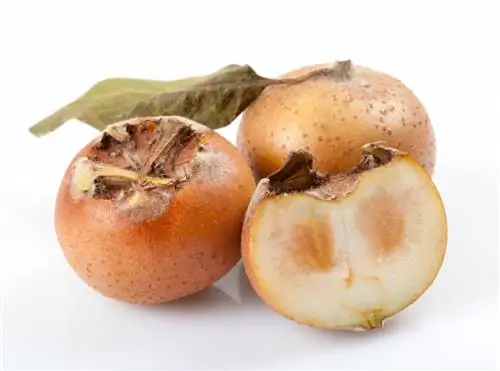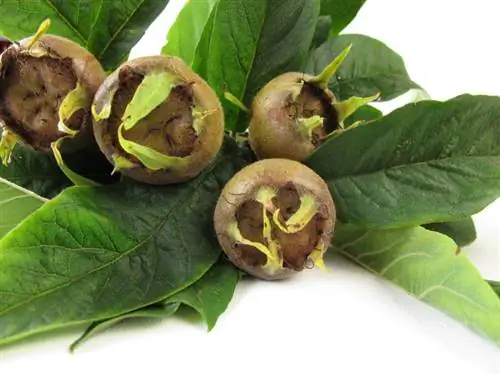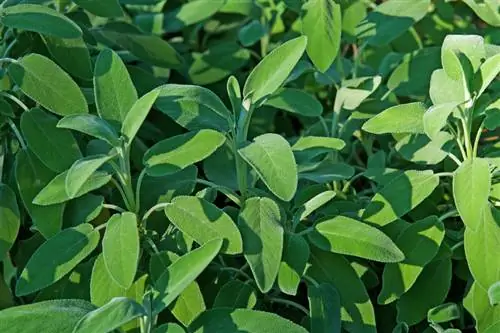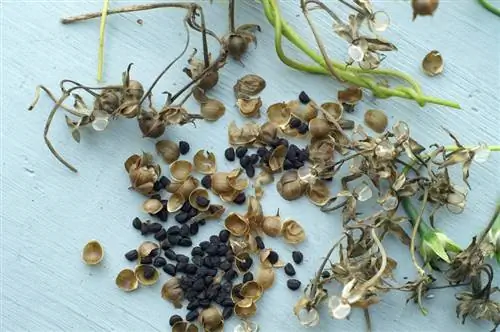- Author admin [email protected].
- Public 2023-12-16 16:46.
- Last modified 2025-01-23 11:20.
Anyone who has ever eaten medlars raw straight from the tree or bush will inevitably have come across them. It's about the kernels it contains, which are usually not eaten because they are extremely hard. But what can be done with them instead?
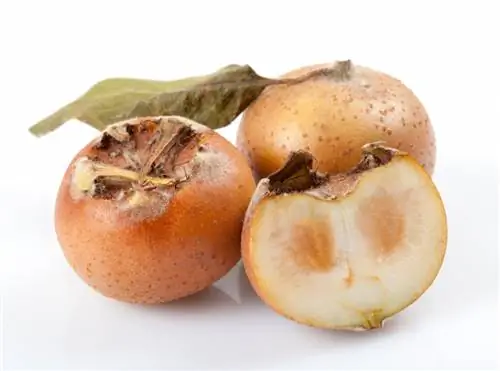
How do I plant medlar seeds correctly?
To plant medlar seeds, take them from ripe fruits in autumn, stratify them over the winter (expose them to frost), soak them in water for 24 hours in spring and then sow them 0.5 cm deep in potting soil.
What do these cores look like?
The kernels or seeds contained in the medlar fruits appear just as bizarre as the entire plant with its crown, flowers and fruits. One would think that the cores are strange structures. They are brownish in color, flat, rounded to oval, hard and structured. Each core is unique.
How does sowing work?
The seeds can be sown either outdoors or at home in pots. A sheltered place is ideal. For planting outdoors, it is recommended to use clay pots or other decomposing pots. These are filled with substrate and placed in the ground, for example. E.g. stuck in the garden.
The first steps
The medlar seeds must be exposed to a period of cold before they are willing to germinate. They are best taken in autumn from the ripe and soft fruits. The pulp should be soft so that the seeds are not damaged when removed.
The removed cores are stratified over the winter. This means they are exposed to frost. This can be done outdoors over the winter or artificially, for example in the freezer at home or in the freezer.
The next steps
In spring, the seeds - if they were not sown outdoors - are soaked in water for around 24 hours. This speeds up the germination process. They can then be placed 0.5 cm deep in potting soil (€6.00 on Amazon). In the near future, the soil will need to be moistened regularly.
After cultivation
After cultivation, the young plants should be given a suitable location. The medlar is my favorite to grow:
- in a moist and calcareous substrate
- in a protected place
- in a sunny, warm location
Tips & Tricks
With bad luck, seeds can take up to two years to germinate. Therefore, other propagation methods for medlar are much more recommended.

